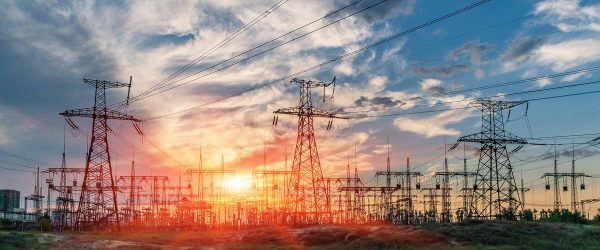Q&A: MOORE COUNTY POWER GRID DAMAGE AND WIDESPREAD POWER OUTAGE

Two utility substations in Moore County, North Carolina, were damaged by gunfire Saturday night in what investigators believe were intentional, targeted attacks. Duke Energy reported about 40,000 customers were left without power, and the utility continues to repair substantial damage and restore power to those affected.
UNC Charlotte is home to the Energy Production and Infrastructure Center — EPIC — a state-of-the-art facility focused on energy education and research. EPIC Executive Director and the Duke Energy Distinguished Chair in Power Engineering Systems Mike Mazzola, answers questions about damage to electrical substations and the measures communities can take to withstand widespread power outages.

How vulnerable are substations to intentional damage from similar attacks that occurred in Moore County?
It is not clear how vulnerable substations are to an attack by gunfire because such events are so rare. The only other attack similar to the attack in Moore County was more than nine years ago in California. That attack, called the Metcalf sniper attack, caused significant damage but little loss of power.
How can utility companies protect physical infrastructure like the electrical power grid from damage?
Utility companies already take many steps to protect physical infrastructure. The most common are fencing, video surveillance and alarms, along with regular employee inspections. Generally, substations are harder to protect than power stations, but the consequences of vandalizing a substation are usually less. The biggest threat to physical utility infrastructure is weather. However, utilities take physical security from malicious attacks very seriously, and therefore events are rare.
What precautions can people in the community take to prepare for an attack on the power grid — whether it is a physical or cyber attack?
An electrical outage experienced by customers can happen for many reasons, but most are very short. Long duration outages are usually caused by extreme weather events, such as hurricanes or ice storms. Every customer in North Carolina is at risk of these types of events and should have a plan to stay in place or evacuate to another safe location if loss of power is expected to linger. If staying in place, plan for a backup supply of water, warm clothing and bedding and easy to prepare food that will last several days if necessary.
The damage is reported to be significant. How long will it take to repair this type of equipment? Would it take the same amount of time and effort if natural disaster damage occurred?
Some equipment in substations is not easy to repair or replace. Depending on what was damaged, repair can take several days or even longer. Fortunately, customers often have another way in which their residence can be supplied with electricity, so even if the substation takes significant time to become fully functional, customers may not be affected for as long.
What are some of the hidden dangers of prolonged power outages? (Things that people don’t necessarily think about since their primary focus is on their own homes)?
Electricity is perhaps the most important of all critical infrastructure. Many other critical systems, like fresh water supply, depend on access to electricity. For some members of our community, access to electricity is critical for their health. We all know that hospitals have backup electricity supplies to ensure patients have access to critical medical care during an outage. But there are people living at home with chronic illnesses that require refrigerators or medical equipment to be continuously powered. It is important for individuals who need electricity for life support to register with first responders who often have programs to help ensure access to back up power.
How can businesses protect their assets during prolonged power outages?
Many businesses that have critical electrical loads will invest in backup power generation. While gasoline or diesel generators are common, a recurring problem during long outages is running out of fuel. Natural gas-powered generators have become popular where natural gas is available. Natural gas service usually remains available even if electricity is not.
How long can a community continue without power, particularly hospitals and nursing homes?
Critical care facilities always have contingency plans for loss of power. Depending on the size of the facility, the plans may include substantial investments made in partnership with their local electrical service provider. In addition, electric utilities often prioritize returning electricity supply to critical health care facilities before other types of customers, making the actual duration of the outage for these facilities shorter.
What does the future of power supply look like and is there an alternative to vulnerable substations?
There will always be substations as long as the electric grid is needed. However, the transformation to low-carbon-emitting generation, such as renewable energy, has created an opportunity for the grid to be organized differently. Some call this the “smart grid” while others talk about “microgrids” or even energy self-sufficient homes called “net-zero” homes. It is certain that however the electrical energy system is modernized, the change to more decentralized generation will likely increase grid resiliency, meaning that after a disruption, the electrical system will return to normal operation in less time.
Original article by University Communications